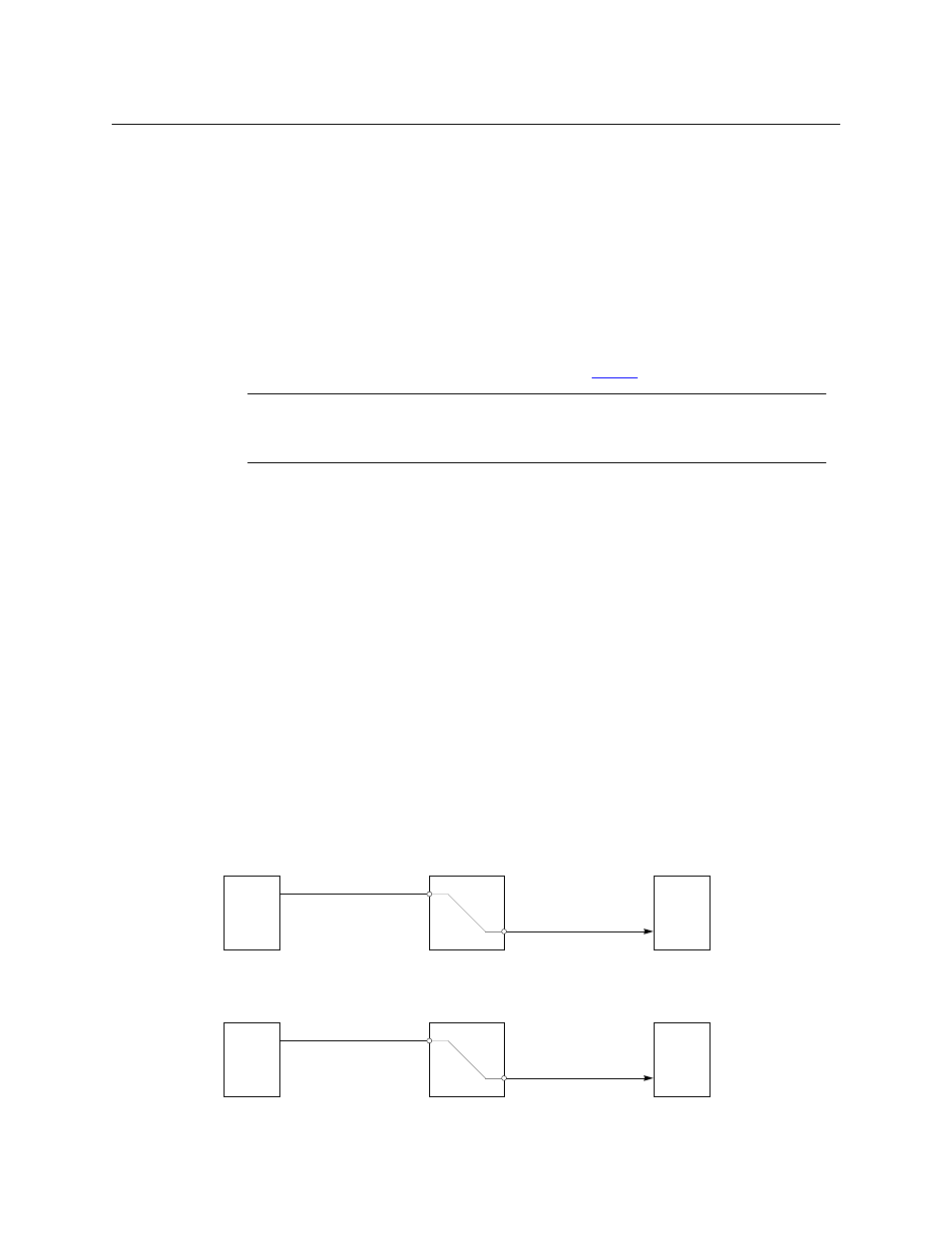Background information, Machine control port types, Terms – Grass Valley CRSC v.3.2 User Manual
Page 50

38
Machine Control Routers Page
Background Information
Background Information
CR Series machine control routers are different from other compact routers:
•
Machine control routes are bidirectional. Unlike video or audio routers, information flows
both ways.
•
Machine control routes are point-to-point
—
one input connects to one output at most.
(Some ports might be tristated in which case they connect to nothing.)
•
The ports of machine control routers are RS-422 using RJ-45 connectors. Each port can be
configured as a receiver or as a transmitter, either during configuration or dynamically as
needed.
For more information about machine control signals, see
Machine Control Port Types
Machine control routers do not have X/Y crosspoints per se, but allow point-to-point connec-
tions. One input may connect to (at most) one output.
The 1RU machine control router has 16 bidirectional serial ports (RJ-45). It supports up to 8
routes.
The 2RU machine control router has 32 bidirectional serial ports (RJ-45). It supports up to 16
routes.
Machine control routers convey serial data, typically commands in one direction and responses
in the other direction. Because the connections are bidirectional, a port is both an input and an
output.
Machine control routers are defined as “data reverse” routers. Each port can be configured as
dynamic, master, slave, controlling, or controlled.
The machine control routers support serial communication up to 1 Mb/s.
Terms
A device can be considered a “controlled” device or a “controlling” device.
Above, the source device is a controlling device. A destination can also be the controlling
device:
Note
Some external devices must be placed in “remote” mode to work with a machine
control router.
SRC
DST
Router
Controlling device
Controlled device
SRC
DST
Router
Controlled device
Controlling device
